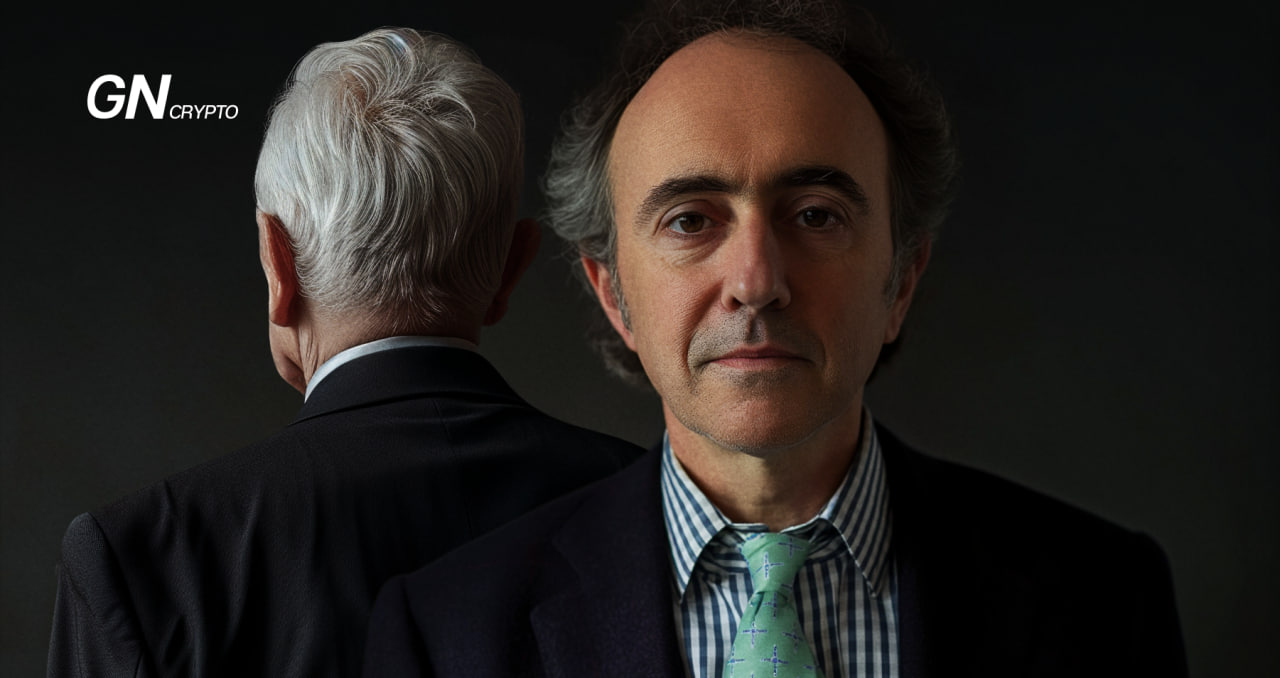VanEck: From John to Jan

Established in the last century, VanEck has transitioned from a modest family business into a global investment behemoth. Under Jan van Eck’s leadership, it has adapted to the modern financial world’s demands, positioning itself as a dominant force in the ETF market. Here’s a closer look at the Van Eck family’s legacy.
On this page
Van Eck Global was founded in 1955 by Jan's father, John van Eck, a Dutch immigrant to the U.S. He sought to exploit the burgeoning international financial markets that were expanding rapidly in the wake of Western Europe's post-Marshall Plan economic revival.
In 1968, Van Eck Global launched the United States' first International Investment Gold Fund, reallocating a substantial portion of its portfolio into gold mining company stocks. By the mid-1980s, as a bullish trend swept through the global gold market, the company managed assets nearing $1 billion and garnered significant profits. John van Eck became a renowned figure, frequently appearing on shows like “Wall Street Week” and gracing the front pages of financial publications.
VanEck's First Setback
Starting in 1986, the gold boom came to an end, and VanEck nearly faced bankruptcy. Gold prices plummeted from $800 to $250 per ounce, and by February 1998, the assets of the International Gold Fund had decreased nearly fourfold to $230 million.
At this critical juncture, Van Eck’s sons—Derek and Jan—and his wife Sigrid, who took on the role of financial director, stepped into the company’s leadership. The family sought alternative strategies for salvation, deciding to expand into Asian markets. In 1996, the company formed a joint venture with the Chinese conglomerate Shenyin Wanguo to develop China's stock market. However, the Asian financial crisis in 1997 dashed all ambitious plans. Within a year, the assets managed by the Van Eck Asia Dynasty Fund plummeted from $46.3 million to $11.2 million.
As a result, the company's client base shrank by almost two-thirds.
The Turnaround with ETFs
In 2006, Van Eck Global pivoted to concentrate on the ETF business and launched its inaugural fund—the Market Vectors Gold Miners ETF. This fund allowed investors to indirectly invest in gold through the stock market instead of purchasing physical bars directly. The ETF achieved substantial success, with its assets under management soaring to $5 billion.
This success significantly inspired Derek Van Eck, who had succeeded his father as the CEO, to nearly completely shift the company’s focus towards ETFs. This strategic pivot proved to be exceedingly fruitful.
By the end of 2009, the company had launched over 20 different ETFs, accumulating a total of $9.7 billion in assets. Today, 90% of Van Eck Global's assets are tied up in ETFs.
Tragically, Derek Van Eck suffered from a serious neurological disease. After his passing in 2010, Jan van Eck took the reins of the company and has since continued to develop the family business. His legal education from Stanford and his enthusiasm for tech startups have enabled Jan to steer the company in new directions, establishing it as a leader in the cryptocurrency ETF market alongside giants like BlackRock, Fidelity, and Grayscale.
Derek van Eck passed away at the age of 46. Source: Barrons
VanEck: Pioneering the Digital ETF Frontier
VanEck stands as a prominent player in the Bitcoin and Ethereum ETF markets today. Unlike firms like Fidelity and BlackRock, which received quick approvals for their ETF applications in under a year, VanEck's journey has been fraught with challenges. As pioneers in the field, they were the first to explore new approaches and were not deterred by setbacks.
For example, VanEck filed its initial application for an ETF that would enable investment in Bitcoin futures as early as 2017, a time when such a concept was hardly considered by others. Despite repeated attempts, VanEck continually faced regulatory rejections. It was not until 2024, after years of relentless effort, that VanEck finally secured approval to launch both a spot and futures Bitcoin ETF.
In contrast, ProShares Strategy submitted a similar application for a Bitcoin futures ETF in 2020 and achieved approval by 2021.
Moreover, VanEck was also the trailblazer in filing for an Ethereum ETF, making its application in 2020 long before heavyweights like BlackRock and Fidelity entered the market.
Jan Van Eck is a firm believer in the future of cryptocurrencies. Source: Fortune
In January 2024, VanEck launched an ETN covering crypto assets (Bitcoin, Ethereum, Solana, and Polkadot), regarded as highly secure in terms of credit risk.
Additionally, VanEck was the first company to apply for a Solana ETF on June 27, 2024, demonstrating confidence in the cryptocurrency's potential. Jan Van Eck also spearheaded the launch of the VanEck Crypto and Blockchain Innovators UCITS ETF, a fund that invests in stocks of companies using blockchain technology.
Today, VanEck has released over 100 ETFs and manages assets exceeding $90 billion, with nearly 40% of these assets invested in cryptocurrency funds.
The content on The Coinomist is for informational purposes only and should not be interpreted as financial advice. While we strive to provide accurate and up-to-date information, we do not guarantee the accuracy, completeness, or reliability of any content. Neither we accept liability for any errors or omissions in the information provided or for any financial losses incurred as a result of relying on this information. Actions based on this content are at your own risk. Always do your own research and consult a professional. See our Terms, Privacy Policy, and Disclaimers for more details.



























